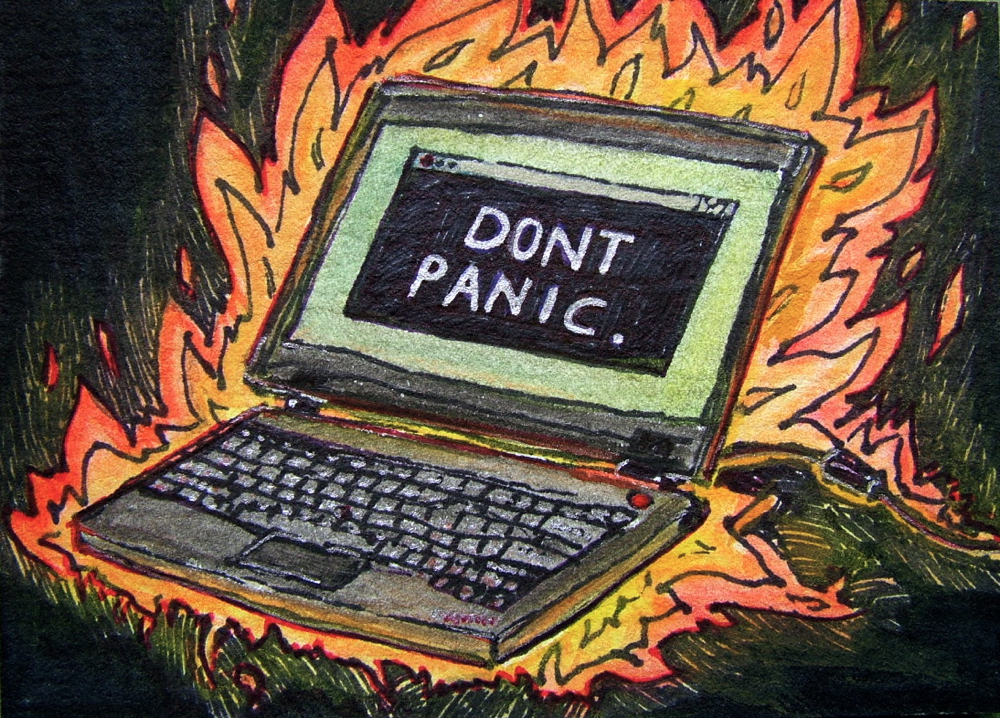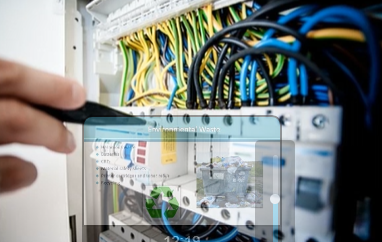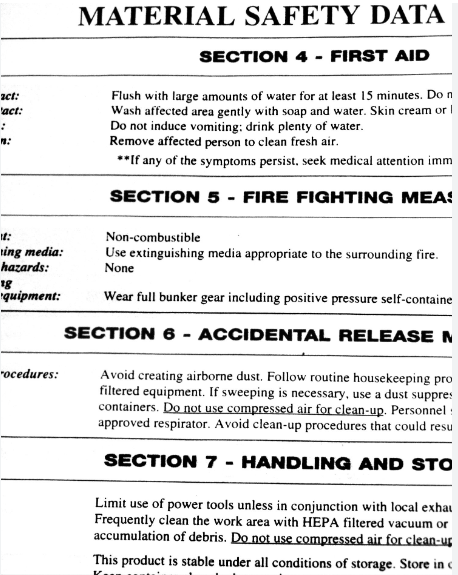Chapter 2 - Safety for You and Computer Components
2023-03-10
780 words
4 mins read

This article is Chapter 2 in the CompTIA A+ certification course on Alison.com that teaches Safety for You and Computer Components.
Common IT Tools

Working with hardware
- Screwd rivers
- Tweezers
- Multimeters - the ability to measure voltage, current, and resistance.
- Chip extractors - removing components from the motherboard
- Storage canisters
- Software tools
Electrostatic Discharge

The same static discharge you feel when you rub your feet on the carpet and touch someone or something that releases the energy stored. This same shock can cause significant damage to computer systems.
• Danger to electronic components
- To feel this shock the charge has to be approx. 3,000 V.
• Computer chips
- A computer chip can be damaged with as little as 200 V.
• Best practices
Handling Components
You can never really eliminate ALL static build-up, but you can minimize it.
• Humidifiers Placed in shops you work that place moister in air. The goal is to get the humidity to around 50%. The dryer the air, the more static The wetter the air, the more opportunity for corrosion and rust.
• Antistatic bags
- For carrying computers/components between workstations.
• Carpet spray
- Spray that can be used on carpet to reduce static electricity.
• ESD mats
- Mats connect to grounding plug and workstation to help prevent static build-up.
• ESD straps
- Most popular, you wear an ESD that starts around your wrist and contains a resister that absorbs static electricity. Next, you use the ESD strap clamp and attach it to the outside metal on the computer casing. This provides constant grounding when servicing a computer, eliminating static build-up.
• Equipment grounding
- Always be on the lookout for the latest and greatest methods available for grounding equipment.
• Self-grounding
- Connect the grounding strap to the grounding plug of a power outlet.
Personal Saftey

• Personal protective equipment
- Goggles
- Gloves
- ESD Strap
- Air Filter Mask
- First Aid Kit
- Hearing Protection
• Chemicals
- Any chemical you don’t know how to use, read up on so you can maintain safety.
- Look at the Material Saftey Data Sheet of each product
- Compressed air
- Cleaning solutions
- Read labels, follow instructions
- Leaky batteries and corrosion.

• Cables and trip hazards
- You will encounter numerous different cord setups
- Cable management, bundle neatly
- Never leave out or risk trip hazards
• Environmental risks
- All components have an electrical source so be mindful of disposing and using.
• Electrical safety
- Lock-out Tag-out procedures when working in groups.
- YOU verify electricity is shut off before operating.
- You always have a risk of fire when electricity is involved.
- Adhere to the National Electrical Code (NEC) & CRF OSHA standards.
| National Electrical Code | CRF OSHA | |
|---|---|---|

|

|
• Fire safety
- Keep fire BC-grade (Chemical & Electrical) fire extinguisher on hand.
• Jewelry removal
- Metals conduct, so decrease your chances be removing metals.
• Lifting techniques
- Use proper lifting techniques, back straight and with legs.
- Portable dollys or carts if needed.
High Voltage

Always be mindful of electricity, and proper protections should be used when working with high voltage.
• Power supplies
- Most common
- Devices have capacitors that hold an electrical charge even when devices are unplugged.
- They are used to convert 120 V of alternating current into 3.3 V, 5 V, or 12 V of direct voltage to operate the equipment.
• CRT monitors
- Most computer have a monitor
- They require 50,000 to create images.
- Don’t open unless you have qualified training
- Never open a monitor
• Warnings
- Always be aware of manufacture labels and warnings.
- Never work on high-voltage equip unless you’ve had specialized training
- Be able to identify nonetheless
Ergonomics
Reducing stressors and repetitive strains for end users.

Preventing discomfort due to repetitive strain injuries • Eyecare
- Take frequent brakes
- Eyes off the monitor and focus on something else every 15 - 20 minutes.
• Posture
- Sitting up straight
- Feet flat on the floor
- Thighs and back at 90 degrees
- Use an adjustable height desk.
• Keyboard and mouse positioning
- Make sure the keyboard not too high or low
- Make sure everything is within arms reach
• Monitor position
- Eye level
• Frequent breaks
- Stretch
Environmental Waste
• Hazardous waste
- Recycle and properly dispose of hazardous waste.
| Recycle | Proper Disposal | |
|---|---|---|

|

|
• Batteries
- Are harmful to the envornment if not disposed of properly
• CRTs
- Are harmful to the envornment if not disposed of properly
• Material safety sheets
- Tell you about harmful chemicals in products you use.
- Tell you how to properly dispose of it.
• Printer cartridges and toner refills
- Recycle
- Some vendors offer discounts
• Recycling
- You want to show your customers you care about their well-being.
Conclusion
You can find free course materials preparing you for the CompTIA A+ exam here: https://alison.com/courses/comptia-a-1000-part-1/
Related Articles:
- 2023/03/07 Chapter 1 - IT Professional Soft Skills
- 2023/03/07 What is the CompTIA A+ Certification?
- 2022/07/22 Secure VPS in Ubuntu 20.04: LetsEncrypt, Cloudflare and more
Authored By Is-Rael Landes
Is-Rael Landes, a good man living on the earth, loving making website, teaching others and coding.